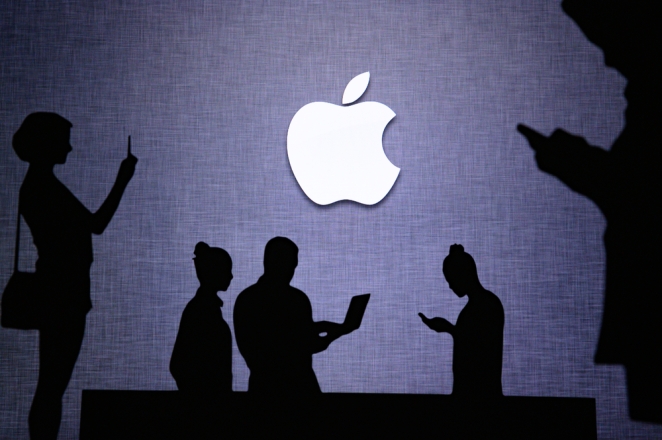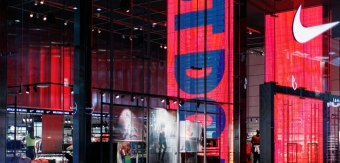Accessibility is often the lens through which people consider inclusive design. But the best brands understand that inclusive design is a much broader concept that embraces how they can connect as many people as possible through innovation.
Of course, it involves accessibility and inclusivity – but if we design to better meet the needs of underserved groups in our customer journeys and brand experiences, we will open our brands to more people more broadly.
To underline this, Marianne Waite, director of inclusive design at Interbrand, discusses how removing barriers is crucial to brand and business growth and how inclusive design helps drive choice, premiumisation and loyalty.

The number of mainstream brands tackling exclusion and inaccessibility is still shockingly small. Despite universal ambitions to be ‘inclusive, innovative and empathic’, according to research from the Return on Disability Group, 96% of brands, when asked how they cater to the needs of disabled and older consumers, do not have an answer.
However, the best brands understand that inclusive design is a broader concept that embraces how they can connect to underserved groups through innovation. Barrier-free brand experience has a simple goal: to create experiences that work for as many people as possible, for as long as possible.
As Interbrand’s Best Global Brands (BGB) report shows, brands at the top of the table have built brand value by connecting with broad audiences. Brands like Apple, Amazon, Microsoft and Samsung understand that inclusivity provides sustainable growth opportunities. As such, they are increasingly investing in the removal of barriers for disabled and underserved consumers across their customer journeys.
So, what do we mean by inclusivity? It encompasses the two practices of inclusive design and design for diversity. By embedding these within the go-to-market process, brands can actively remove barriers from the customer experience –making themselves more accessible. These brands then enjoy the business benefits of connecting with a wider spectrum of humanity.
Measuring success

We are frequently asked by brand and corporate comms teams: ‘how do we measure success?’ and ‘what are the best KPIs for inclusion?’. We’ve seen too many instances of brands all too keen to congratulate themselves on their efforts, to then face a backlash from intended audiences pointing out the brand experience still falls short.
The truth is, it’s impossible to measure impact and judge effectiveness from within an organisation. Only consumers can gauge how inclusive and effective a brand’s experience is. And to measure satisfaction levels, a brand must actively listen to, and engage with, the intended consumer group.
Brands can certainly use external KPIs to share their level of commitment and investment. Being open and honest about how inclusive their creative processes are is a great starting point; How many products were developed directly with disabled or underserved customers? What do those customer profiles look like? Are they included throughout the entire creative process?
So much time and resource go into inclusivity and accessibility metrics, but the biggest proof point remains the bottom line. There is a reason Apple, Amazon and Microsoft are the highest value brands in the world. They consistently invest in human-centred design, offering some of the world’s best consumer experiences that overcome barriers to participation.
As a result, they can sell more products and services to more people. Amazon One-Click, Alexa and the Fire Stick mean accessible shopping is cheap, speedy and easy for everyone. These aren’t tokenistic – look at us, serving vulnerable people – they are simply easy to use for the widest range of consumers. (Note: No brand or design can claim to work for all)
Three accessibility business drivers

There are three clear business drivers for brands that champion this wider spectrum of human need: it’s a driver of choice; it can command a premium; and it engenders loyalty. People choose to spend money with brands that make their lives easier and more convenient.
They will also pay a premium for brands that work well. For instance, despite disabled consumers being economically worse off than nondisabled consumers, Apple is a brand of choice because of its ease of use and equitably aspirational aesthetic.
However, a word of caution to brands: there shouldn’t be a price premium on products that have been specifically designed to be inclusive. Underserved groups shouldn’t have to pay an accessibility tax. For example, when Nike launched their Fly Ease shoe – a trainer designed for disabled customers – the price point was beyond the people it was intended for and so alienated them.
If your brand works well, people won’t switch; switching for older or disabled people can be painful, expensive and frustrating. They will be loyal if your brand works well for them. Digital expert Rick Williams, who is blind, once said how easy it was to do his online shopping with Ocado because the site was so accessible. When asked how Sainsbury’s compared, he retorted: “I have no idea. I’ve never had to try it.”
Levers to improve brand strength

Over recent years, we’ve observed other correlations between accessibility and the Best Global Brands rankings. When accessibility is at the heart of a brand’s strategy their brand value improves – especially in terms of three crucial brand strength levers: direction, agility and participation.
Looking at the top three brands we see each pulling a particular lever. For Apple it is ‘direction’. Its commitment to simplicity and accessibility permeates all touchpoints and departments. Each team has at least one accessibility specialist and with this defined culture, everyone in the business can execute the vision.
Amazon has embodied ‘agility’. During the pandemic, when many retailers were struggling, Amazon continued to cut through user and purchasing barriers to create technology that makes shopping easier for disabled and nondisabled people. This resulted in record sales and profit.
Microsoft uses ‘participation’ to full effect. The fastest rising brand, it has worked hard to appeal to new and diverse customers and partners, to create dialogue and encourage involvement and collaboration. It has a powerful stance on integrity – with a focused effort to drive trust in its products that enhance the human experience.
No brand is perfect, all can improve meeting the expectations of underserved customers and employees. Successful inclusion is more than box-ticking and following trends. Real change needs organisation-wide programmes to shift attitudes and behaviours. It will take time, investment and perseverance but the time is right and the only real risk for brands is being left behind.






